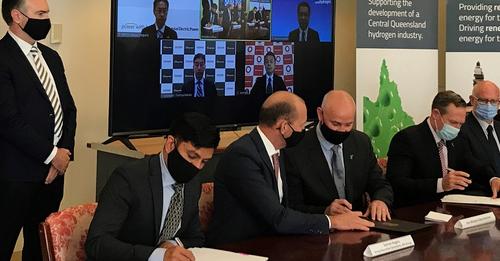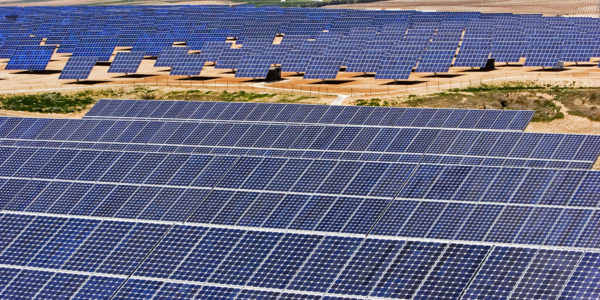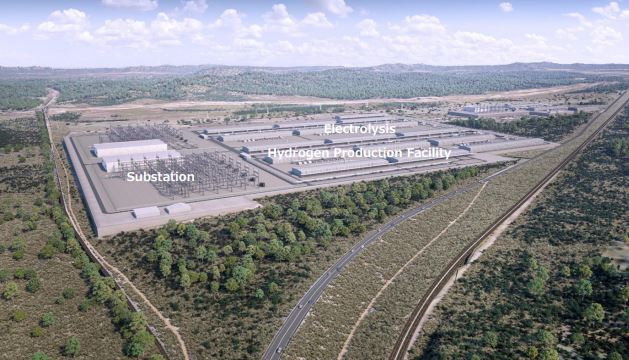Queensland generator Stanwell and Japan’s largest hydrogen supplier Iwatani Corporation will lead a $10.4 million feasibility study to investigate the commercial viability of developing a 3 GW electrolysis plant at Gladstone with the view to producing green hydrogen for export to Japan and use in local industry.
When built, the proposed green hydrogen project would be the largest in Queensland – commencing production in the mid-2020s, the project would scale up to more than 3 GW of electrolysis capacity by the early 2030s.
The project aims to produce up to 36,500 tonnes per annum of renewable hydrogen and export to Japan from 2026, scaling up to 328,500 tonnes per annum in 2031 to meet forecast demand.
Stanwell and Iwatani, which supplies 70% of Japan’s hydrogen market, have already completed a planning study for the project and will now commence a detailed feasibility study to examine the commercial viability of the project.
The study is being supported by investment from a broader consortium including Sydney-based energy infrastructure business APA Group and Japanese companies Kansai Electric Power Corporation, Marubeni Corporation and Kawasaki Heavy Industries.
The consortium partners, which have expertise across the hydrogen supply chain – including renewable energy, hydrogen production, liquefaction, shipping and offtake – will provide in-kind and financial contributions towards the feasibility study.

Image: Stanwell
Stanwell acting CEO Adam Aspinall said the involvement of international and Australian counterparts would be critical in developing the state’s emerging hydrogen industry.
“While there’s still a way to go for hydrogen to be commercial, collaboration with key partners across all parts of the supply chain is critical to helping drive down the cost of hydrogen technologies and supporting the development of the industry,” he said.
Stanwell has already secured a 236-hectare site at Aldoga, west of Gladstone, for the hydrogen production base and a ~100-hectare site is to be acquired at the Port of Gladstone to serve as a hydrogen liquefaction and loading base.
The project aims ultimately to export green hydrogen in liquid form to Japan, as well as supply large industrial customers in the Central Queensland region.
APA chief executive and managing director Rob Wheals said the region is ideally suited for the renewable energy project, experiencing favourable weather conditions for more than 300 days a year.
“Queensland has some of the best sun and wind resources in Australia, making it well placed to not only develop an export hydrogen supply chain, but demonstrate the benefits of unlocking green hydrogen in our regions,” he said.
“Australia’s advantages in hydrogen are enormous and this project could be a game-changer in helping Queensland develop a hydrogen industry at scale.”
The project has attracted financial support from the Japanese Ministry of Economy, Trade and Industry and the Australian Renewable Energy Agency (ARENA) which this week announced it has awarded the project up to $2.17 million in funding.
The feasibility study will examine production technology, the construction of hydrogen liquefaction plants and liquefied hydrogen carriers, associated finance and environmental assessments, and commercialisation models.
ARENA chief executive Darren Miller said the study presents a “significant opportunity” to accelerate the development of export opportunities for renewable hydrogen in Australia.
“Australia’s vast solar and wind resources and our proven ability to export energy products mean we are well placed to build a large-scale competitive hydrogen export industry in the future,” he said.
“Feasibility studies like this are a necessary and crucial step to build the case to attract the finance required for large, impactful projects.”

Image: Acciona Energía
The study marks another step in the transition of the Central Queensland region from a traditional coal and gas hub to a green hydrogen hotspot.
Earlier this year, London-based Eco Energy World announced plans for a 200 MW green hydrogen plant with 100 MW of energy storage in Gladstone while Japanese trading giant Sumitomo also plans to build a hydrogen production plant in the region.
Spanish renewable energy developer Acciona Energía is also eyeing the region, last month revealing it had received approval to expand its Aldoga Solar Farm from 250 MW to 600 MWp to support the development of Gladstone’s green hydrogen hub.
Gladstone also recently joined the National Energy Resources Australia (NERA) network of hydrogen technology clusters, which seeks to seed innovation and productivity by interconnecting players in the hydrogen field.
This content is protected by copyright and may not be reused. If you want to cooperate with us and would like to reuse some of our content, please contact: editors@pv-magazine.com.









1 comment
By submitting this form you agree to pv magazine using your data for the purposes of publishing your comment.
Your personal data will only be disclosed or otherwise transmitted to third parties for the purposes of spam filtering or if this is necessary for technical maintenance of the website. Any other transfer to third parties will not take place unless this is justified on the basis of applicable data protection regulations or if pv magazine is legally obliged to do so.
You may revoke this consent at any time with effect for the future, in which case your personal data will be deleted immediately. Otherwise, your data will be deleted if pv magazine has processed your request or the purpose of data storage is fulfilled.
Further information on data privacy can be found in our Data Protection Policy.